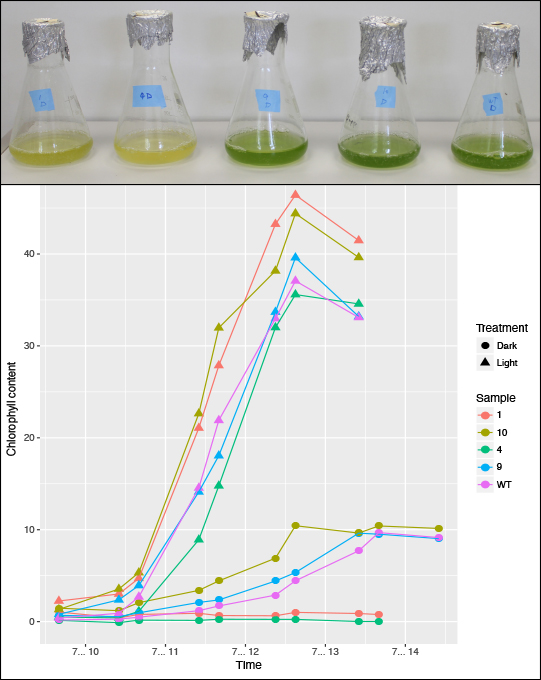
Adaptations along the shift from photo-autotrophy to heterotrophy
The chlorophytic green alga Chlamydomonas reinhardtii is not limited to a photo-autotrophic lifestyle but can also live heterotrophically under no-light conditions in the presence of acetate as an external carbon source. This form of myxotrophy can be regarded as a major eco-physiological and evolutionary advantage. It allows C. reinhardtii and many other algae to adapt rapidly to natural fluctuations of the available light and nutrient resources. Niche shifting to a permanent heterotrophic lifestyle will evolve highly adapted C. reinhardtii populations, whose specialist individuals exhibit an increased fitness under zero-light conditions compared to the original myxotrophs that experience no-light environments only temporarily. The function of genes and protein complexes conveying photo-autotrophy will be relaxed of purifying selection in the heterotrophic selection line, because genes for photosynthesis are of no more use. An evolutionary experiment that controls for various selection pressures will aim to elucidate the timing and series of adaptive genomic and metabolic changes associated with the transition from mixotrophy to permanent heterotrophic conditions, thus simulating the transition from facultative to obligate heterotrophy in plants. Specifically, we will investigate”
- the pace with which fitness increases under strictly heterotrophic growth conditions,
- how fast and which (epi)-genetic, proteomic, and metabolic changes come about,
- whether genes whose function is dispensable under heterotrophic growth experience measurable shifts of their evolutionary rates, and, finally,
- if the newly indispensable nature of photosynthesis genes triggers co-evolutionary changes in genes and protein complexes that replicate and transcribe the now nonessential ones.
To this end, we will evolve three lines of C. reinhardtii for >1,500 generations under heterotrophic (zero-light with acetate), mixotrophic (light plus acetate), and photo-autotrophic conditions (light without external carbon source). We will sample from up to ten replicates of each selection line per strain every 100th generation to measure biomass production, the assembly efficiency of the photosynthesis machinery, the metabolization of metals such as iron and magnesium, and the mating success between the various selection lines and their ancestors. We expect to observe an early fitness effect in the growth rates after less than 600 generations, with a fixation and accumulation of genomic and metabolic differentiations being highest in the heterotrophs. Every 200th generation, we will perform phenotypic, genomic, transcriptomic, and proteomic assays to infer the genetic responses to light exposure in the absence of external carbon. These data will be compared to the reference phenotypes, genomes, transcriptomes, and proteomes of the corresponding starter lines. Besides shedding light on the early functional reconfigurations during the transition to a secondary heterotrophic lifestyle, this project will generate a wealth of naturally selected C. reinhardtii lines with fine-tuned adaptations to various growth conditions that may aid future research in plant evolutionary biology as well as biotechnological application such as the production of biofuels under no-light conditions.